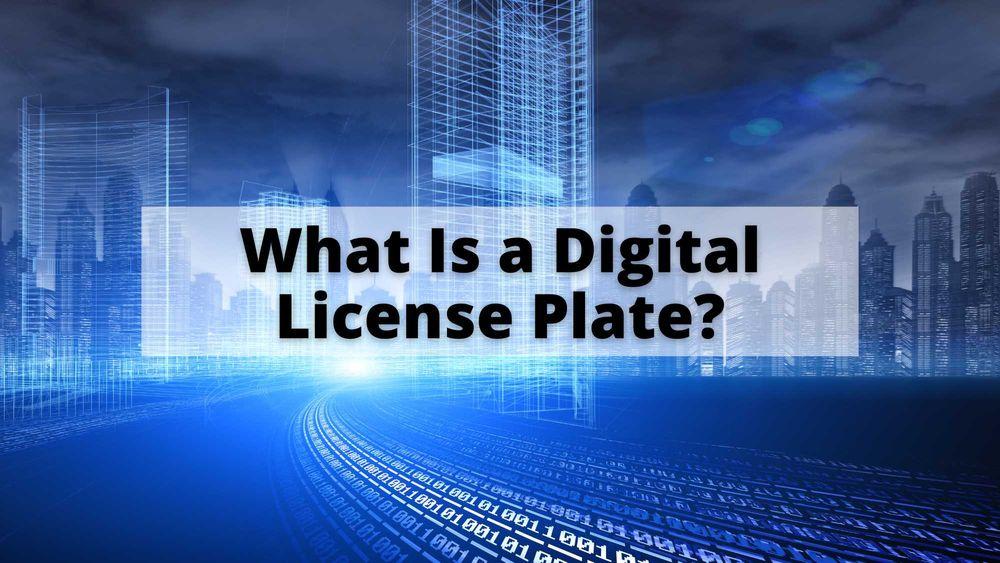A digital license plate is a vehicle-mounted identifying device that transmits a radio signal that can be tracked and monitored digitally.
Digital license plates are customizable, readily trackable, and simplify the process of renewing registrations.
Quick Links:
What is a digital license plate?
Types of digital license plates
How do digital license plates work?
How to get a digital license plate?
How to install a digital license plate?
How to maintain a digital license plate?
Why would you want a digital license plate?
Are digital license plates legal?
Digital license plates are permitted to drive in the United States if purchased and registered in one of the following states: California, Arizona, Michigan, and Texas. In Texas, digital license plates are available for commercial vehicles only.
What Is a Digital License Plate?
A digital license plate, also known as an electronic plate, is a type of license plate that uses a digital display instead of the traditional metal or plastic.
The main advantage of a digital license plate is that it can be easily updated with the latest registration information, making it more convenient for both drivers and law enforcement.
Digital License Plate Design
A digital license plate is a regular license plate’s size, which is 12 by 16 inches (30 by 41 cm). The number of characters varies by state, with some states allowing for up to eight characters on a plate. A digital license plate is mounted within rectangular housing.
Digital License Plate Display
The digital license plate display hardware includes an illuminated screen that allows for different digital displays such as license plate number, state of issue, expiration date, and other key info.
E-ink or electronic paper is used to make digital license displays. Instead of producing light (like LED/OLED displays do), an e-paper display (EPD) reflects light, making it easier to read in direct sunlight.
EPDs are typically monochromatic and are very thin and light. This makes them appropriate for mounting on the back and front of a vehicle to display messages without distracting other drivers.
Internal Components
A digital license plate’s internal components consist of the central computer system, the memory chip, the identifying key, the tamper-detecting sensor, and the ignition disruptor.
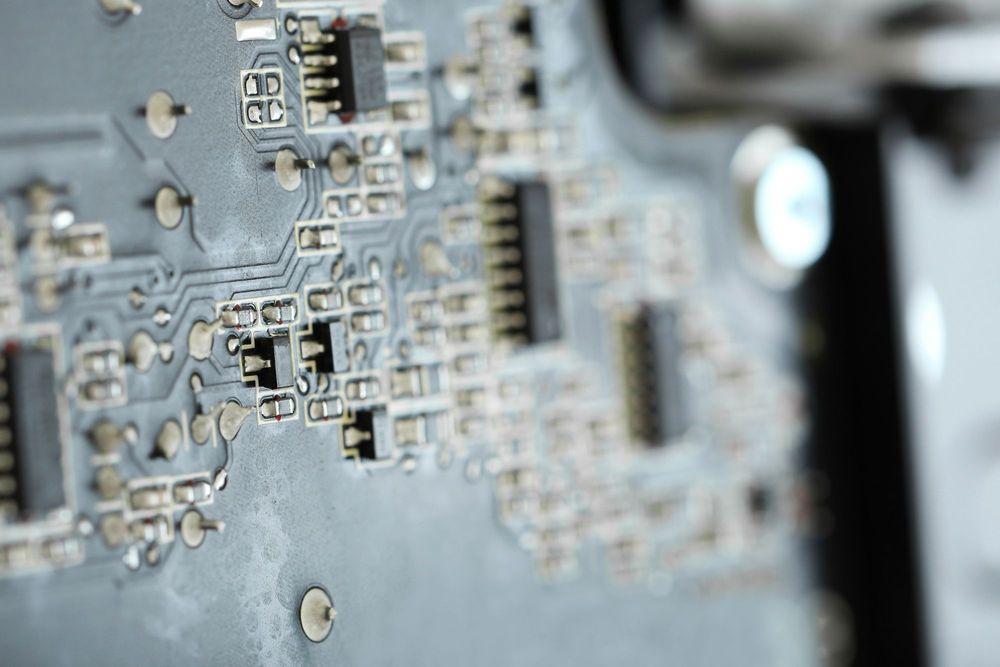
Types Of Digital License Plates And Their Key Features
Digital license plates can be battery-powered, or wired directly into your car's electrical system.
Battery Powered Digital License Plates
Battery powered plates use a small battery to power the digital display. These types of plates are typically less expensive than hard-wired plates, but they require more frequent battery replacement.
In California, Arizona, and Michigan, all cars are eligible for battery-powered digital license plates. These come with a replaceable 5-year battery.
Features of battery-powered digital plates:
- Monochromatic HD display
- Replaceable battery
- Long Term Evolution (LTE) system for low power internet of things (IOT)
- Secure cloud communication
- Operating temperature: -40C to +85C
- Corrosion resistant mounting bracket (GM9540)
- Federal communications commission (FCC) standard compliant
- Chemically-strengthened lens
- Compliant with the license plate legislation—American Automotive Motor Vehicle Association (AAMVA) standard for plate form, visibility, license plate size, and character requirements.
Hard-Wired Digital License Plates
Hard-wired plates are permanently connected to the vehicle’s electrical system. These plates are more expensive than battery powered plates, but they do not require battery replacement.
The hard-wired version is not approved for personal vehicles. It is only available for commercial vehicles and includes integrated telematics functions and a backlit display.
- Front-lit, monochromatic HD display
- Wired to 12v Vehicle Battery Power
- Built-in GPS
- Long Term Evolution (LTE) system for low power IOT
- Secure cloud communication
- Operating temperature: -40C to +85C
- Corrosion resistant mounting bracket (GM9540)
- Federal communications commision (FCC) standard compliant
- Chemically-strengthened lens
- Compliant with the license plate legislation—American Automotive Motor Vehicle Association (AAMVA) standard for plate form, visibility, license plate size, and character requirements.
How Does A Digital License Plate Work?
A digital license plate transmits a wireless signal, which can be used to monitor and track your vehicle digitally. It is intended to work with the car's computer system and to communicate with external sources for vehicle regulatory purposes.
The external digital display technology is combined with inside components. These include a processor that saves vehicle information, speed and light-detecting sensors; and an ignition disruptor that prevents ignition should the digital license plate be tampered with. Each piece of hardware is designed to be tamper-proof.
The internal and external components are linked to a central computer system, which provides alarms and remote orders if tampering is detected.
How To Get A Digital License Plate
As of 2019, only four states—California, Arizona, Michigan, and Texas—have implemented or are piloting programs for digital license plates, but the trend is growing.
How To Obtain A Digital License Plate In California
California has had a digital license plate pilot program for commercial vehicles since 2018. In September 2022, Governor Gavin Newson signed California Assembly Bill No. 984 to extend digital license plates for all vehicles.
California drivers can now get a digital license plate, also called an ELP (electronic license plate). With the adoption of AB-984, all California vehicle owners are allowed to use digital license plates as a replacement to traditional license plates, decals, tabs, and registration cards provided by the California DMV.
In California, a battery powered license plate costs $19.95 per month. A hard-wired digital license plate costs $24.95 per month.
California digital license plates are currently offered exclusively through a private company, Reviver. California drivers can sign up for them on the Reviver website.
How To Obtain A Digital License Plate In Arizona
In Arizona, a digital license plate may be used only on license plate display devices approved from the Arizona Department of Transportation ADOT. The plate is approved by ADOT, but must be bought from a private seller.
Currently the Reviver company is the only provider of digital plates in Arizona. The digital plates have a one time purchase price of $500 to $800. Arizona drivers can sign up for them on the Reviver website.
How To Obtain A Digital License Plate In Michigan
The Michigan Department of State does not sell, administrate, or profit from digital license plates. Digital license plates are legal in Michigan, but may only be purchased from private companies or car dealers. Digital plates are digital versions of the standard metal license plates that vehicle owners register and renew with the Secretary of State.
In Michigan, a battery powered license plate costs $19.95 per month. Hard wired digital license plates cost $24.95 per month.
Michigan drivers can sign up for them on the Reviver website or buy from Reviver auto dealer partners throughout Michigan.
How To Obtain A Digital License Plate In Texas
Digital license plates are available to purchase and use in Texas from June, 2022, but only for commercial fleet vehicles and vehicles owned by government entities.
In Texas, to obtain a digital license plate, the vehicle owner first must register the vehicle in Texas and pay a $95 administrative fee.
At this time, the only way to buy a digital license plate, which cost between $500 and $800, is to order from the Reviver website. Drivers must also pay a $95 annual fee in addition to the plate cost.
How To Install A Digital License Plate
Currently, there are two plate models from the Reviver company available to purchase and use:
- Battery-powered digital license plate
- Hard-wired digital license plate
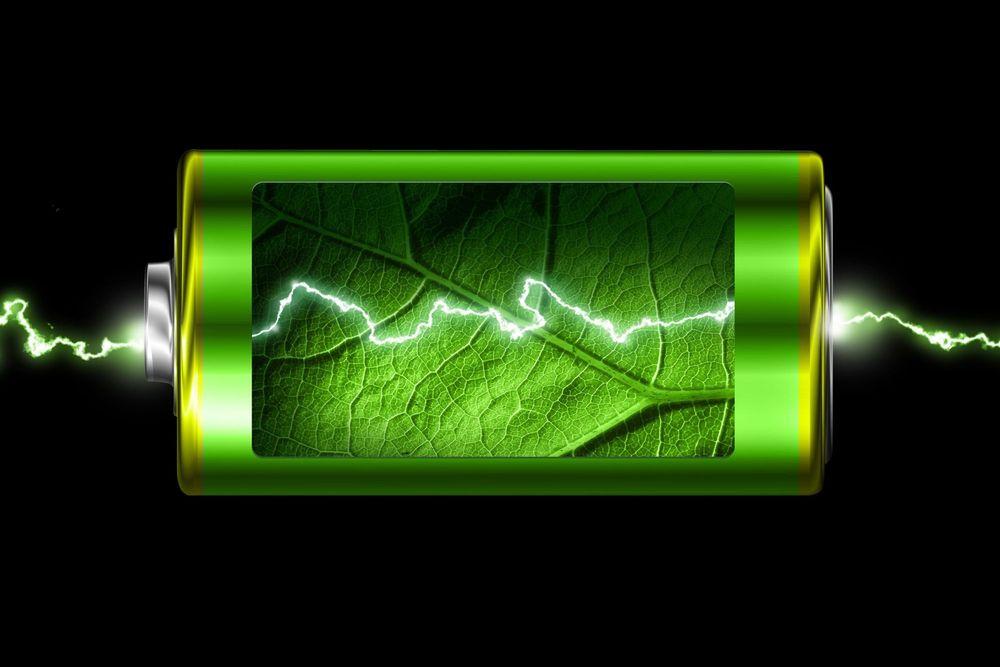
To correctly set up your new digital plate, it is important to follow installation instructions for both types.
How To Install A Battery-Powered Digital License Plate
Installing a battery-powered digital license plate is quite simple, thanks to the Reviver app.
- Step 1: to activate and set up your battery-powered digital license plate simply download the Reviver app from the Apple Store or Google Play store. Go to the navigation menu and create an account, and take a picture of your license plate to register your current license plate number and registration.
- Step 2: once the Reviver team has confirmed your vehicle and plate info, you will receive a notification by email and through your Reviver app to begin the update process for your digital plate to display your license number.
- Step 3: once your plate is displaying your license plate image, attach your new digital to your car, using the universal mounting bracket included in the box with your plate, and you're all set!
How To Install a Hard-Wired Digital License Plate
To be properly connected to your car's electrical system, the hard-wired digital license plate requires professional installation. The installation is challenging since it involves connecting your hard-wired digital license plate to a steady 12V power supply. If not installed correctly, the license plate may malfunction and/or damage the vehicle's battery.
Although the hard-wired digital license plate is installed by a professional, you also need to download the Reviver app, create an account, take a picture of your license plate to register your current license plate number and registration, and wait for confirmation from the Reviver’s team.
After you receive the confirmation, you can contact Reviver's support team and schedule an installation of your hard-wired digital license plate.
How To Maintain Your Digital License Plate For Optimal Performance
Digital license plates are not without their own set of challenges. In order to ensure optimal performance, it is important to regularly maintain your digital license plate. Here are a few tips to help you keep your plate in good working condition:
- Check the batteries. Digital license plates rely on batteries for power. Over time, these batteries can lose their charge, which can cause the plate to malfunction. To avoid this problem, it is important to check the batteries regularly and replace them as needed.
- Clean your license plates. Like any other piece of electronics, a digital license plate can accumulate dust and dirt over time. This can interfere with the plate's ability to communicate with roadside readers. To keep your plate performing at its best, be sure to clean it on a regular basis.
- Keep the plate away from direct sunlight. Ultraviolet rays can damage the plate over time, causing it to become discolored or even illegible.
- Avoid scratching the surface of the plate. Even a small scratch can cause the plate to malfunction. If the plate does get scratched, cover it with a clear adhesive film to protect it from further damage.
- Update your information. One of the benefits of digital license plates is that they allow you to easily update your registration information. If you move or change vehicles, be sure to update your information with the DMV so that your plate remains valid.
Why Would You Want A Digital License Plate?
There are a number of benefits to using digital plates. For one, they can be updated in real time, which means that information such as your registration status can be displayed to law enforcement and other officials instantaneously.
Here are a few advantages of digital license plates.
Information Delivery
Digital license plates can provide more information at a glance. The Vehicle Identification Number (VIN), registration expiration date, and proof of insurance can all be displayed on the screen, making it easy to check if a car is up-to-date on its registration.
This unlimited access to information can be a valuable asset for both drivers and law enforcement officers. In addition, digital license plates can also be used to display Amber Alerts or other emergency notifications. By making important information more readily available, digital license plates have the potential to make our roads safer for everyone.
Security
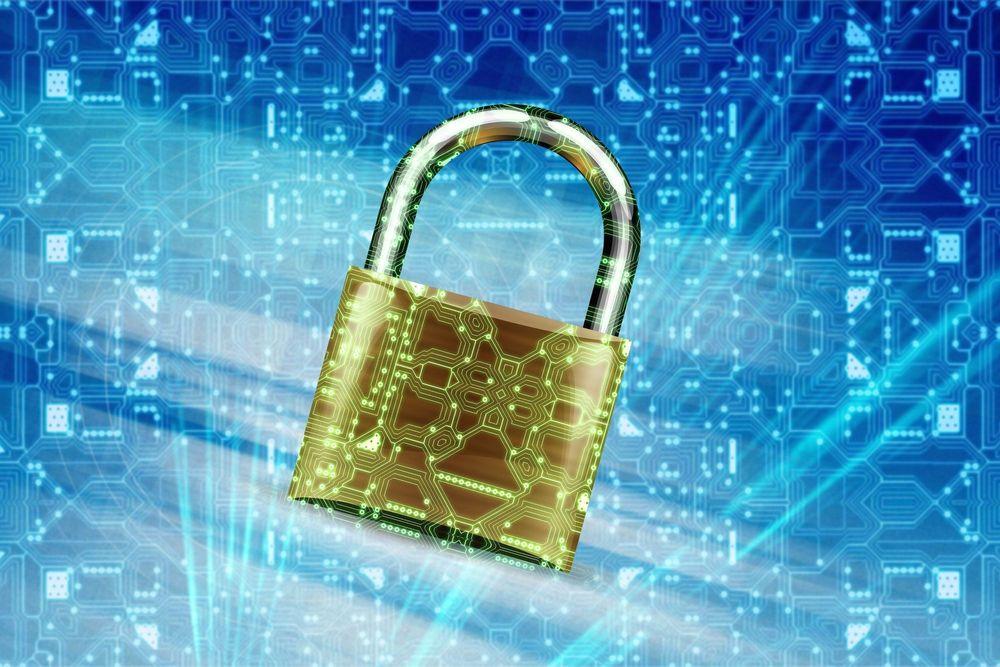
License plate recognition technology is becoming increasingly popular as a means of providing security for both personal vehicles and public vehicles.
Unlike traditional metal license plates, which can be easily stolen or damaged, license plate frames with built-in LED lights provide a more secure and durable solution.
In addition, if a car is involved in an accident or crime, the plate can emit a signal that can be accessed remotely by law enforcement. This makes it easier to identify a car that is involved in an accident or crime, and helps to keep roads safer for everyone.
Prepaid Services
Certain transportation-related fees and services can now be prepaid online and automatically using electronic license plates. For example, vehicle registration can now be automatically renewed as a prepaid service.
Parking permits can also be linked to an electronic license plate and tracked remotely. Toll fees can be pre-paid since the license plate can interact with the global positioning system (GPS) to plan routes, calculate travel costs, and transmit a payment signal when it goes through a toll booth.
Are Digital License Plates Legal?
In 2015, the state of California became the first in the nation to approve electronic license plates for use on public roads. Since then, a handful of other states have followed suit, and the use of these high-tech plates is becoming increasingly common. Mexico doesn’t allow digital plates for personal vehicles, but only for commercial vehicles.
In the US, the Reviver company has led the way in providing digital license plate technology. As of 2022, it is the sole provider of digital license plates to the states of California, Arizona, Michigan, and Texas.
Reviver’s digital license plates are legal to drive on public roads across the United States. They are also allowed to cross American borders into Canada and Mexico.
Sell Your Car Online With PrivateAuto
PrivateAuto can help you sell your car quickly and easily.
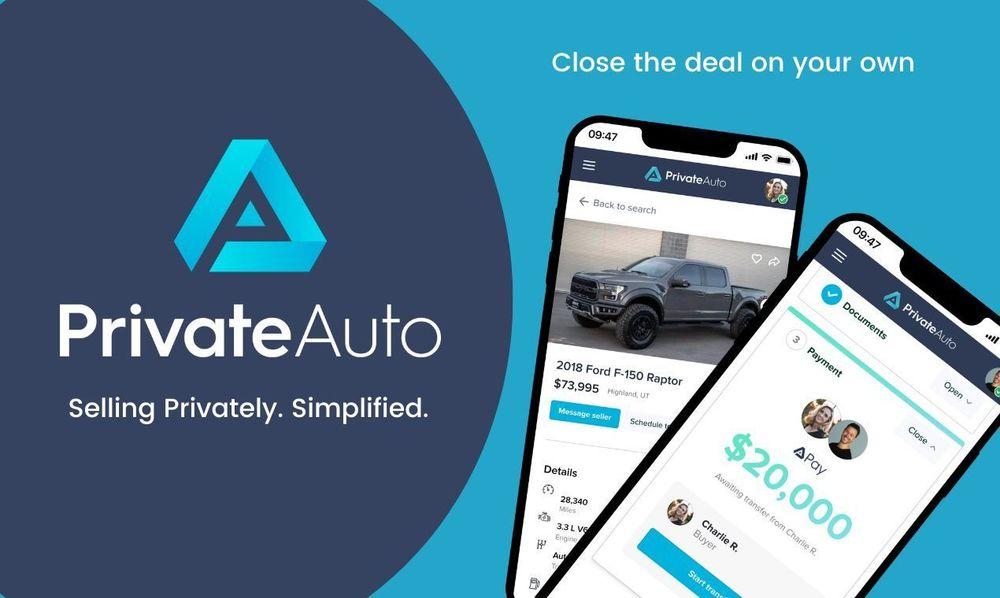
Our technology-driven, self-service solution makes it easy and safe to communicate, e-sign state documents, and send or receive payments instantly and securely. You can also schedule a test drive and negotiate the price without ever giving out your personal contact information.
Interested in buying a used car? Browse used vehicles for sale!
Digital License Plate FAQ
How do I personalize my digital plate?
You may customize your digital plate via the mobile app (for Android and iOS) or rconnect.reviver.com. Simply tap on the plate symbol in the iOS app to explore customization choices. Select the "Customize Plate" menu option on Android. Choose "Customize Plate" from the desktop site.
You can upload an image of your choosing, select a pre-set image or color scheme, or use the design tool to create a unique look for your digital plate. You can also add an optional message to display above your plate number.
Whether you want to show off your personality, support a cause, or promote your business, customizing your digital license plate is a fun and easy way to do it!
Can I personalize my digital license plate in California?
If you have a California-registered car, you may now modify the background color and add banner messages.
The State of California has temporarily stopped the approval of new banner messages. Once the California Department of Motor Vehicles authorizes the introduction of new customized messages, California drivers will be able to submit a request for your chosen banner message, which can be sent forward to the DMV for approval.
How often should I renew my digital license plate?
Each state has different requirements for how often license plates need to be renewed, but most states require drivers to renew their registration every one to five years. In some cases, the expiration date of the registration and the license plate may not be the same, so it is important to check both dates to ensure that both are up-to-date.
When it comes to electronic license plates, the driver uses an encrypted app to renew the registration. To renew your electronic license plates, you'll need to provide your license plate number, vehicle identification number, a renewal notice confirming your current address, confirmation for your car insurance, your payment information, and your driver’s license.
You'll also need to pay the renewal fee plus any additional fees that may be applicable.
How to change my current license plate for a digital one?
In most cases, if you want to change your license plates, you need to visit your local DMV office. To change your current license plate for a digital one, you must register your vehicle and purchase a digital license plate in California, Arizona, Michigan, or Texas.
If you want a specialty plate that supports a particular cause, or if you want a personalized plate number, you may need to submit a completed application and fees.
Once your registration and address are up to date, you can choose the plate and configuration you want. After you submit your application, you will receive confirmation of your new plate and configuration.
Depending on your state, you may be required to replace your license plate if it is lost or stolen. In these cases, it is important to contact your DMV as soon as possible to begin the replacement process.
Where are digital license plates allowed?
Drivers can now sport digital license plates on their cars in Arizona, California, and Michigan. Commercial vehicles can also use them in Texas.
Sport digital license plates are available for drivers who want to show support for their favorite team. The sport plates on their cars feature the logo or colors of a sports team.
How to find my license plate number?
The license plate number is a unique identifier that is assigned to your vehicle. You can find it on your license plate on the front or rear of the vehicle.
If your vehicle is not nearby and you need to know the plate number, you can typically find the license plate number on the back of your car registration under “Plate Type.”
You can also look on your car insurance card, or log into your account with your vehicle insurance provider. Insurance providers usually list the license plate number associated with a policy.
Finally, you can request your license plate number from your local Department of Motor Vehicles office.
How much do license plates cost?

The license plate cost might be included in your registration or billed separately. Some states allow you to transfer a license plate from your old car to your new one, while others require brand-new plates. For more information on how much license plates cost in your state, you should contact your state’s Department of Motor Vehicles office.
How to get a new license plate?
To obtain a new license plate, you must register your vehicle in the state in which you live. Displaying a license plate indicates that your vehicle is properly registered. The state will provide a license plate—and any tags required with the plates—once your vehicle is properly registered.
Lost, stolen, or damaged license plates and registration stickers may be replaced by filling out an Application for Replacement Plate which includes info about the vehicle and ID information , and taking it to a DMV office. In most cases, there is a small fee for replacement plates and/or stickers.
If you have recently been in an accident and your license plate was damaged, you will need to obtain a new one. You will need to bring any crash reports, as well as the required paperwork and payment, to the DMV.
What do you do with old license plates?
Most people don't give much thought to their license plates once they get new ones. However, old metal plates can actually be recycled or reused in a number of different ways.
If you’re wondering what to do with your old plates, one option is to simply send the old plates back to the Department of Motor Vehicles. In most states, the DMV will recycle the plates or sell them to a scrap metal dealer.
Our state-by-state license plate guide will tell you the proper protocol for your state.
Some states require that you surrender your license plate when you sell your car. So be sure to check your state's requirements before you finalize the sale.
How can I cancel my license plates?
There are two ways to cancel your license plates. You can either turn them in to your local Department of Motor Vehicles office, or you can destroy them yourself. See the requirements for your state in the article above.
What is a Colorado digital license plate?
In April, 2022, House Bill 22-1162 was signed into law. HB22-1162 addresses authorization to use digital number plates in lieu of metal number plates on a vehicle.
SECTION 1. In Colorado Revised Statutes, 42-3-201, add (8) as follows:
42-3-201. Number plates furnished - style - periodic reissuance
- tabs - rules - definition - repeal.
(a) SUBJECT TO THE RULES PROMULGATED UNDER SUBSECTION (8)
(c)(II) OF THIS SECTION, THE OWNER OF A REGISTERED VEHICLE MAY DISPLAY A DIGITAL NUMBER PLATE IN LIEU OF ONE OR BOTH OF THE PLATES ISSUED UNDER SUBSECTION (1)(a)(I) OF THIS SECTION IF THE REGISTRATION NUMBER AND EXPIRATION DATE ARE CLEARLY VISIBLE AT A DISTANCE OF ONE HUNDRED FEET IN NORMAL SUNLIGHT.
(b) DIGITAL NUMBER PLATES NEED NOT DISPLAY MORE THAN ONE COLOR.
(c) (I) THE DEPARTMENT MAY PERMIT, IF NOT OTHERWISE INCONSISTENT WITH THIS ARTICLE 3, THE USE ON A DIGITAL NUMBER PLATE OF: (A) MESSAGES DISPLAYED ON THE PLATE; AND (B) OTHER FUNCTIONALITY MADE POSSIBLE BY THE USE OF DIGITAL TECHNOLOGY. (II) THE DEPARTMENT, IN CONSULTATION WITH THE COLORADO STATE PATROL, SHALL ADOPT RULES FOR THE USE OF DIGITAL NUMBER PLATES.
THE RULES MUST:
(A) SET STANDARDS NECESSARY FOR THE SAFE USE OF DIGITAL NUMBER PLATES;
(B) ESTABLISH REQUIREMENTS FOR PRODUCT OVERSIGHT AND CONSUMER SUPPORT;
(C) ESTABLISH REQUIREMENTS FOR PRODUCT SIZE, DESIGN, DISPLAY, AND FUNCTIONALITY;
(D) ESTABLISH A PROCESS FOR APPROVAL OF DIGITAL NUMBER PLATES PRODUCTS FOR STATEWIDE USE;
(E) SET PROTOCOLS FOR DATA SHARING, PRIVACY, AND SECURITY;
(F) ESTABLISH A PROCESS FOR REVOKING THE AUTHORITY TO USE A DIGITAL NUMBER PLATE;
(G) SET TESTING REQUIREMENTS TO APPROVED DIGITAL NUMBER PLATES; (H) SET A PROCESS TO DETERMINE THE TYPES OF NUMBER PLATES THAT ARE ELIGIBLE TO USE AS DIGITAL NUMBER PLATES; AND
(I) SET REPORTING REQUIREMENTS FOR COMPANIES THAT SELL DIGITAL NUMBER PLATES TO THE PUBLIC.
